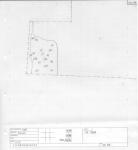Interpretation
-
- This stratum was associated in some way with the use of the hearth US 8083 due to the presence of burning on the surface. This may have been part of the preparation of this area for the construction of the hearth
-
- Darian Marie Totten
- 24-7-2009
Stratigraphic Relationships
- No Linked Records
Site Photo
- No records attached.
Description
- color, consistency, composition
- trowel, pick
- see plan
- sandy silt
- blackish brown
- friable
- later intervention in the form of a mouse borough which introduced modern plastic
- accumulation
- white calcareus stone tufa
- charcoal animal bones
- ceramics, bricks, fragments, tesserae, bronze flake
- This stratum was individuated for its color and the presence of medium to large size of inclusions. It has a horizontally oriented surface which slopes gently east to west, with the inclination of this area. The high concentration of inclusions visible on the surface continues throughout the stratum however, those inclusions found in the upper part of this layer demonstrated evidence of burning. There was also a higher concentration of charcoal inclusions on this upper surface. The thickness of this stratum is not uniform and is highest in the northern two thirds of the stratum. For this reason, the interface of this stratum with that following presents a slope from south to north. This stratum distinguishes itself from that following for its consistency and color.
- this stratum was excavated in its entirety
Ceramic Inventory
- 1100 AD - 1199 AD
- vetrina sparsa (b? transizionale?)
| Total fragments | |
|---|---|
| 3 | |
| 6 | |
| 59 | |
| 8 |
